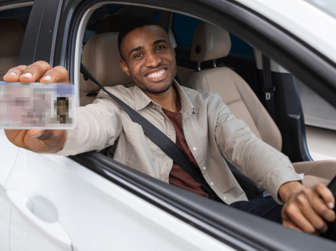Car sickness, also known as motion sickness, starts off with a general feeling of being unwell, and then you might start feeling dizzy or queasy. It then starts to go downhill quite quickly from there, escalating to nausea and vomiting. These are the typical motion sickness symptoms most people experience.
At some point in our lives, we’re bound to be a victim of car sickness to a varying degree. It’s especially common in children. Car sickness is a type of motion sickness which occurs as a result of the conflicting messages your body experiences (usually in a moving car). Your inner ear signals that you’re moving; your eyes say you’re not, while your body is still. It essentially speaks to your body’s sense of balance and equilibrium.
According to an article published on The Daily Express, the most common triggers for car sickness are:
- Reading in the car (which causes dizziness or headaches).
- Facing backward (in the opposite direction the car is moving in).
- Sitting in the backseat.
- Dehydration.
- Fatigue.
- Overeating and/or travelling on an empty stomach.
If you suffer from car sickness, there are medicinal remedies such as taking a nausea tablet or buying a motion sickness band. If you want to overcome car sickness without medical assistance, it might help to look at ways to work on your senses. Here’s how:
The eyes are very much complicit in the act of confusing your body into car sickness. So one way most people avoid car sickness is to stare out into the horizon. This shifts the attention away from motion. Others prefer to actually drive, which makes focus a much easier thing to come by.
If you’d still much rather be a passenger, you might want to sit in the front and not the backseat – even in an Uber! Be warned, reading will aggravate car sickness.
In recent years, car companies are starting to be innovative around a cure for car sickness. According to Jaguar Land Rover, self-driving cars of the future will be able to adjust the car settings to prevent occupants from being nauseous. Meanwhile, the French car manufacturer Citroen has recently launched a set of spectacles called Seetroen that stop you from feeling woozy while travelling in a car.
Eating or drinking ginger is said to be as effective in preventing car sickness as over-the-counter medication. You could also try dabbing some ginger, peppermint or lavendar essential oils on your wrists or behind your ears.
Avoid eating greasy or spicy foods, or eating too much before travelling in a car – small, healthy snacks frequently work best. On the other hand, it’s also not advisable to starve yourself before travelling!
The most common way people reduce the chances of being car sick is to keep air circulating in the car by opening windows or blowing cool air and facing vents to their face.
It is advisable to also sit up straight (looking to the horizon) and take deep breaths.
You could also take the time to meditate on a future where cars will combat car sickness, or where we can simply teleport. Until then…
Everything you need to know about your car battery
Is it a good idea to repair your tyre with a patch or plug?


